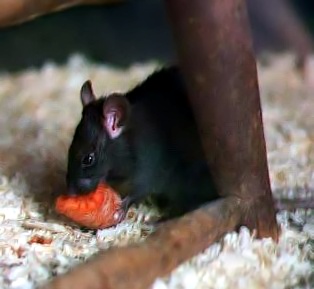Post by velesoid on Mar 18, 2020 3:27:09 GMT 5
Scolopendra gigantea, also known as the Peruvian giant yellow-leg centipede or Amazonian giant centipede, is one of the largest centipedes of the genus Scolopendra with a length up to 40 centimetres (12 in). This species is found in various places in South America and the Caribbean, where it preys on a wide variety of animals, including other sizable arthropods, amphibians, mammals and reptiles.
It is a carnivore that feeds on any other animal it can overpower and kill. It is capable of overpowering not only other invertebrates such as large insects, spiders, millipedes, scorpions, and even tarantulas, but also small vertebrates including small lizards, frogs (up to 95 mm long), snakes (up to 25 cm long), sparrow-sized birds, mice, and bats.Large individuals of S. gigantea have been known to employ unique strategies to catch bats in which they climb cave ceilings and hold or manipulate their heavier prey with only a few legs attached to the ceiling.
At least one human death has been attributed to the venom. In 2014, a four-year-old child in Venezuela died after being bitten by a giant centipede which was hidden inside an open soda can. Researchers at Universidad de Oriente later confirmed the specimen to be S. gigantea.

(Bernard DUPONT from FRANCE)
The black rat (Rattus rattus)
The black rat (Rattus rattus), also known as ship rat, roof rat, or house rat—is a common long-tailed rodent of the stereotypical rat genus Rattus, in the subfamily Murinae.
Black rats are generalist omnivores. They are serious pests to farmers because they eat a wide range of agricultural crops. They are black to light brown in color with a lighter underside. Tamed black rats are sometimes kept as pets, but are much less common in this role than the larger brown rat (Rattus norvegicus).
A typical adult black rat is 12.75 to 18.25 cm (5.0 to 7.2 in) long, not including a 15 to 22 cm (5.9 to 8.7 in) tail, and weighs 75 to 230 g (2.6 to 8.1 oz), depending on the subspecies. Despite its name, the black rat exhibits several colour forms. It is usually black to light brown in colour with a lighter underside. In England during the 1920s, several variations were bred and shown alongside domesticated brown rats. This included an unusual green-tinted variety. The black rat also has a scraggly coat of black fur, and is slightly smaller than the brown rat.
Black rats are considered omnivores and eat a wide range of foods, including seeds, fruit, stems, leaves, fungi, and a variety of invertebrates and vertebrates. They are generalists, and thus not very specific in their food preferences, which is indicated by their tendency to feed on any meal provided for cows, swine, chickens, cats, and dogs.

(https://commons.wikimedia.org/wiki/User:Liftarn)




